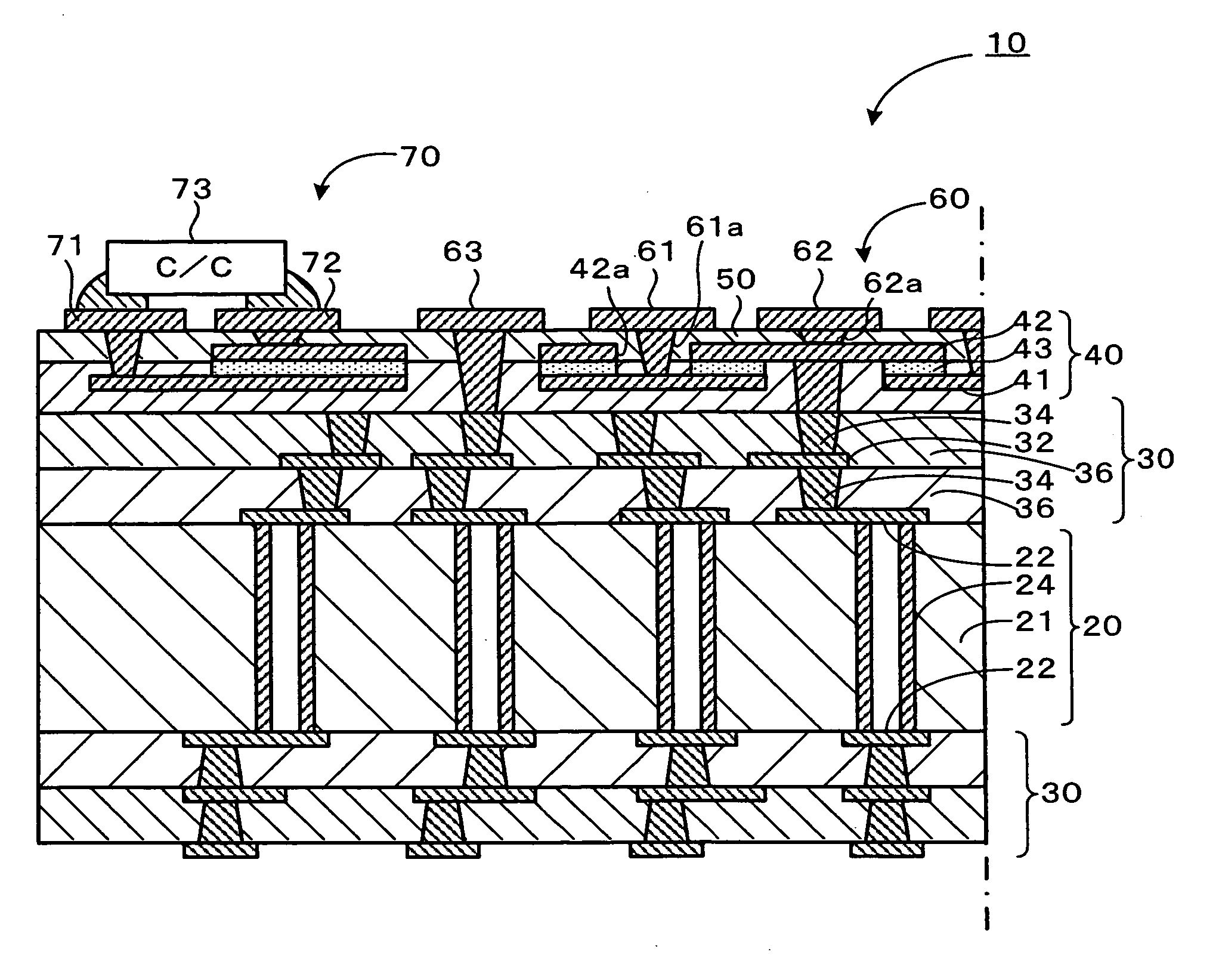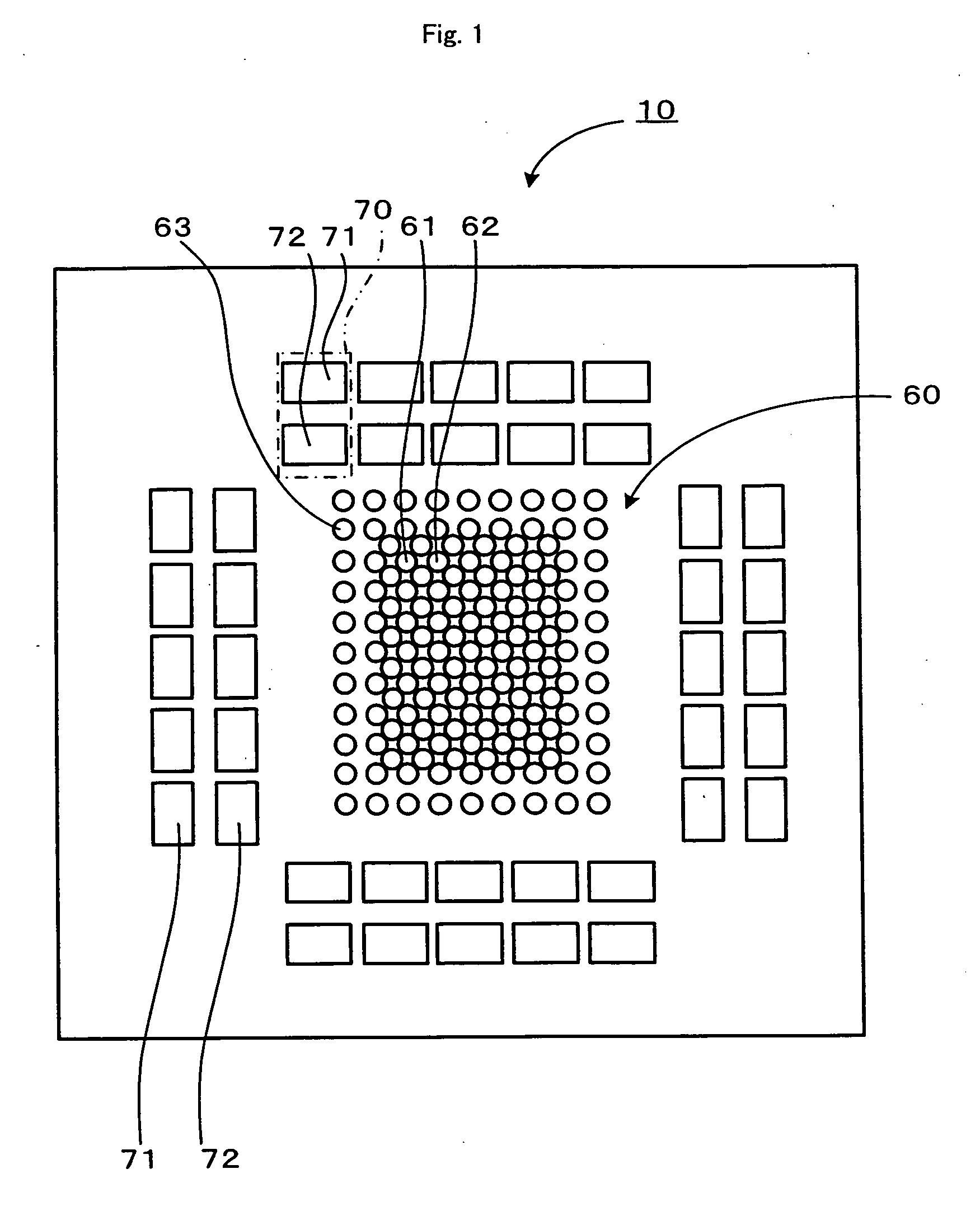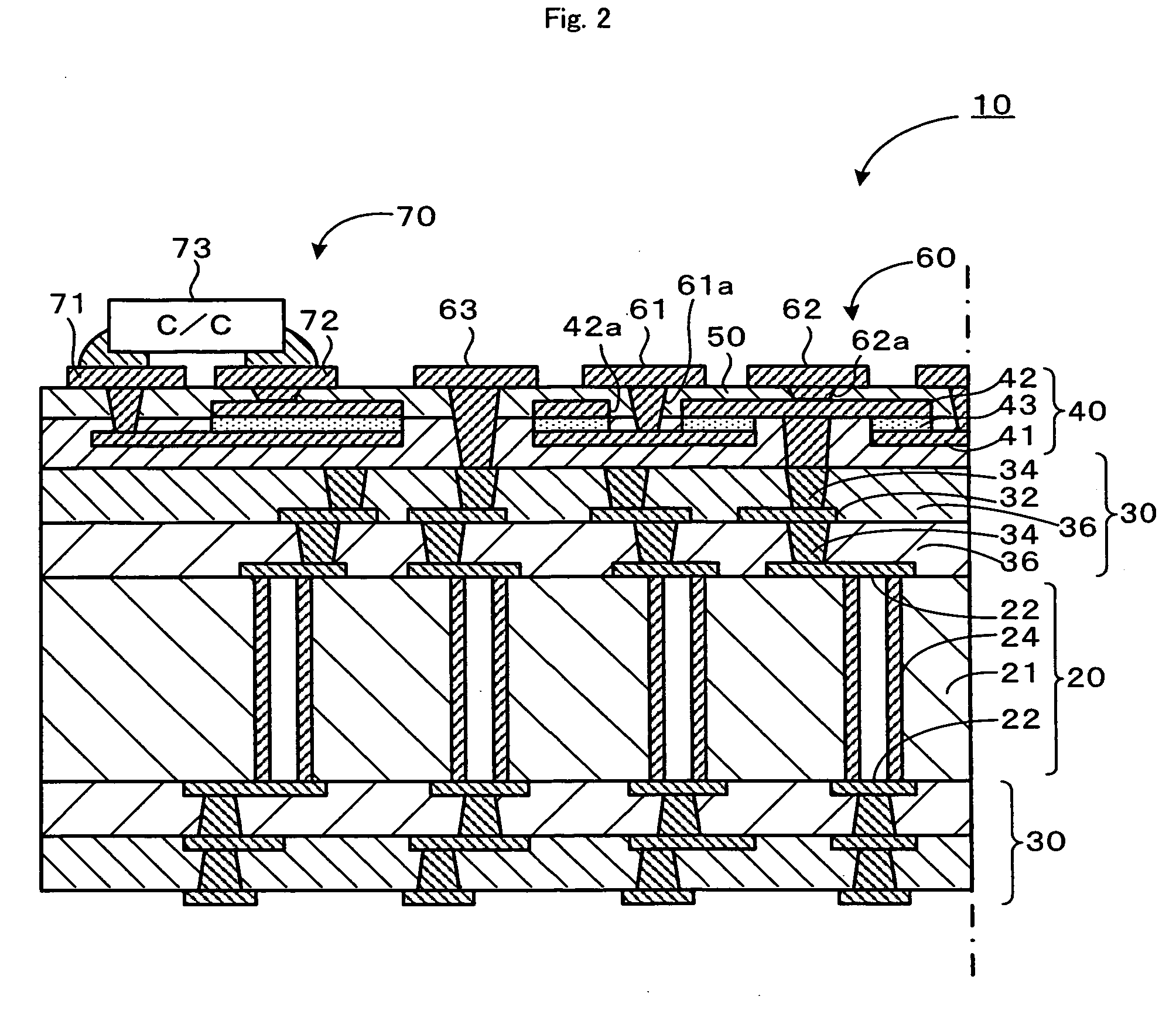Multilayer printed wiring board
a printing board and multi-layer technology, applied in the direction of printed circuit stress/warp reduction, dielectric characteristics, cross-talk/noise/interference reduction, etc., can solve the problems of difficult calcination and make a high dielectric constant material into a ceramic, and achieve the effect of reducing the degradation of the decoupling effect, prolonging the wiring, and reducing the difficulty of calcination
- Summary
- Abstract
- Description
- Claims
- Application Information
AI Technical Summary
Benefits of technology
Problems solved by technology
Method used
Image
Examples
example 2
[0063]FIG. 8 is a longitudinal section (showing only the left side of a central line) of a multilayer printed wiring board 110 of Example 2. As shown in FIG. 8, the multilayer printed wiring board 110 of the present example has the same core substrate 20 as Example 1, the build-up portion 30 in which wiring patterns 32 and 22 laminated via resin insulating layer 36 on the upper surface of core substrate 20 are electrically connected by via holes 34, an interlayer insulating layer 120, laminated on the build-up portion 30, a layered capacitor portion 140, laminated on the interlayer insulating layer 120 and arranged with a high dielectric constant layer 143 and the first and second layer electrodes 141 and 142 that sandwich the high dielectric constant layer 143, a stress relaxing portion 150, laminated on the high dielectric constant layer 143 and formed of an elastic material, a mounting portion 160, on which a semiconductor element is mounted, and the chip capacitor positioning re...
example 3
[0089]FIG. 13 is a longitudinal section (showing only the left side of a central line) of a multilayer printed wiring board 210 of an Example 3. As shown in FIG. 13, the multilayer printed wiring board 210 of the present example has the same core substrate 20 as Example 1, the build-up portion 30 in which wiring patterns 22 and 32 laminated via the resin insulating layer 36 at the upper surface of the core substrate 20 are electrically connected by means of via holes 34, an interlayer insulating layer 220, laminated on the build-up portion 30, a layered capacitor portion 240, laminated on interlayer insulating layer 220 and arranged with a high dielectric constant layer 243 and the first and second layer electrodes 241 and 242 that sandwich the high dielectric constant layer 243, an interlayer insulating layer 245, laminated on the layered capacitor portion 240, a stress relaxing portion 250, formed of an elastic material and laminated on the interlayer insulating 245, a mounting po...
example 4
[0105] In Example 2, all of through holes 530 and through holes 531 were formed at positions corresponding to the power supply pads and the ground pads. As a result, the static capacitance of the layered capacitor portion became 0.4 pF.
PUM
 Login to View More
Login to View More Abstract
Description
Claims
Application Information
 Login to View More
Login to View More - R&D
- Intellectual Property
- Life Sciences
- Materials
- Tech Scout
- Unparalleled Data Quality
- Higher Quality Content
- 60% Fewer Hallucinations
Browse by: Latest US Patents, China's latest patents, Technical Efficacy Thesaurus, Application Domain, Technology Topic, Popular Technical Reports.
© 2025 PatSnap. All rights reserved.Legal|Privacy policy|Modern Slavery Act Transparency Statement|Sitemap|About US| Contact US: help@patsnap.com



